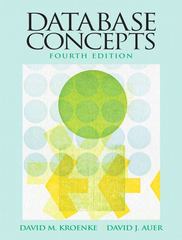Answered step by step
Verified Expert Solution
Question
1 Approved Answer
Question: User stories vs Use cases: A user story represents what a user needs from thesystem in terms of value, whereas a use case represents
Question: User stories vs Use cases: A user story represents what a user needs from thesystem in terms of value, whereas a use case represents how a user interacts withthe system to gain some value DwivediAs far as documenting arequirement is concemed, the user story stops at writing a single sentence thatcaptures the user type, task, and goal As a
User stories vs Use cases: A user story represents what a user needs from the
system in terms of value, whereas a use case represents how a user interacts with
the system to gain some value
Dwivedi
As far as documenting a
requirement is concemed, the user story stops at writing a single sentence that
captures the user type, task, and goal
As a
user type
I want to so that
Use cases go much further in terms of specification details. User stories are
developed as part of requirement analysis after having an initial conversation with
the user, whereas use cases understand and develop the next level of details around
the user's needs. The following set of user stories have been identified for a smart
home control system, after interviewing with several homeowners and residents:
i
As a resident, I want lights to flash if I
m in the study room when the doorbell is
pressed, so that I can understand that someone has come while I
m listening to
loud music.
ii
As a resident, I want to see a time
stamped photo of anyone pressing the
doorbell, so that I can be convinced that I've had deliveries claimed to have been
attempted.
iii. As a resident, I want an intercom system in the doorbell linked to my phone so
that I can talk with any couriers who turn up while I
m out.
iv
As a resident, I want to know the open
closed state of extemal doors so that I
won't get paranoid that I left the front door open when I left the house.
v
As a resident, I want to track the temperature in my bedroom so that it does not
affect my sleep quality.
vi
As a resident, I want to be able to generate lights
noise indoors reminiscent of
human activity so that the house still looks occupied while I am away.
vii. As a resident, I want automated blinds
curtain control so that I can simulate
activity while I
m away from the house and ensure our plants still get some light.
viii. As a resident, I want to be able to turn off lights from bed, so that I can turn
downstairs lights off when I get into bed, turn my bedside lamp off ready to sleep,
and realize that I accidentally left a light on downstairs.
ix
As a resident I want to know the light level, occupancy and if the window's
open in a room, so that I don't accidentally leave the study window open when it
gets dark and find that an army of mosquitos has invaded.
x
As a resident, I want more centralized control of lights in a room so that I don't
have to go round the room switching side lights on
off individually.
Assume that the software for the smart home control system is being developed
using an object
oriented approach. Identify possible objects in the system and
develop an object
oriented design for it
in UML. Specify explicitly any reasonable
assumptions you made about the systems when deriving your design.
Draw a state machine diagram showing the possible state changes related to the
automated blinds
curtain control subsystem of the smart home control system.
Step by Step Solution
There are 3 Steps involved in it
Step: 1

Get Instant Access to Expert-Tailored Solutions
See step-by-step solutions with expert insights and AI powered tools for academic success
Step: 2

Step: 3

Ace Your Homework with AI
Get the answers you need in no time with our AI-driven, step-by-step assistance
Get Started


